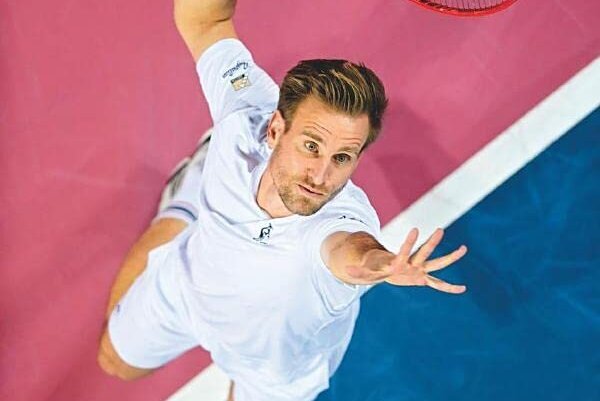Scoring with tactics: A slice would be good for the game
The slice is hot? Unfortunately, not for many. Even a mediocre slice can make a big difference in club tennis! An excerpt from the new tennis book Scoring with Tactics: The Art of Thinking About Tennis .
by Florian Goosmann
last edit:
Sep 21, 2022, 08:05 am

Let's move on to one of the most beautiful shots in tennis: the backhand slice. He is seen less and less on the tour. Power tennis dominates at the top of the world, the two-handed backhand is funneled into drill training from childhood and the good old slice is losing importance. And yet it is so effective! Even if it's not played perfectly.
Ashleigh Barty's favorite hit
Steffi Graf (the older ones among you will remember) hardly ever played another shot on the supposedly worse backhand side, and the combination of forehand hammer and deep slice was the death knell for almost every opponent.
Even the great Ken Rosewall (those of you who are much older will remember) played it like no other. When asked why he had never played a topspin backhand, he once replied: "Because I've never needed one."
From today's perspective, that might be an exaggeration. Nevertheless, it is a pity that not only on the tour but also in the club there is hardly a slice left. The Slice is fun once you learn to play with it. Then it is even conceivable as an attack ball (as it was often used in the past).
Ashleigh Barty was one of the few players who played a two-handed backhand but still had a brilliant slice in her repertoire - and used it frequently. Next to Nadal's topspin, Barty's slice was probably the most unpleasant shot in world tennis because it bounced off extremely flat and was so unfamiliar to her teammates. Barty usually circulated a long, slow slice across the entire half of the field from defense, giving himself time and space to move back into the middle; if she was on the trigger herself, she would slice a slice down the line, biting and mean, with an extra slice to the outside. And on the return, Barty liked to chip the opposing serve back short and flat, like Roger Federer. The Swiss maestro had perfected this ball, which looks so inconspicuous but makes the opponent look so stupid because they simply can't do anything with it, caught in the no-man's-land between the T-line and the baseline.
That's why you see the slice less and less
As seldom as the slice can now be seen in adults, it has almost completely died out in the youth sector. The reason is simple here too: Nine out of ten kids learn a two-handed backhand, which makes it more difficult from a technical point of view to master a good slice and correspondingly good volley. In addition, as a two-handed player you rarely "need" a slice. While the one-handed player often only has a rather weak topspin backhand and can save himself from high balls with the slice (and thus HAS to learn it), the two-handed player is simply off the hook even with balls above shoulder height: thanks to the support of the With his free left hand, he can still apply enough pressure to the ball quite high up.
This is your chance!
Why learn a shot you don't need anyway? That's exactly why: because hardly anyone on the opposing side knows him anymore. And so can hardly deal with it. My slice still helps me immensely against my former tennis student D., who now plays three grades higher than I ever did. And the shot recently earned me a dubious but honest compliment: "It's totally unusual, no one plays like you anymore," D. commented when I took a penalty set from him with soulful slice balls. Why is the Slice so effective? Even if he's with just a little
backspin, it changes the rhythm of the rally; he confuses the opponent, who has become accustomed to evenly rebounding balls over several rallies. The slice forces him to go under the ball, giving it more topspin and laying the tired bones further down for the deep balls.
Start small
Take a trainer to show you how to slice (or check out Ash Barty's) and start slicing in the T-Field over short distances. Without great backswings or swings. Works? Then go further back and try to use the slice within a few rallies on short balls from the opponent. If you feel reasonably safe, use your new weapon in the media round. Not immediately with critical scores, but every now and then in between. Because even if the slice does not arrive optimally on the opposite side at first, but possibly too long, too short, too high and with too much backwards twist, the opponent will be surprised. And reward you with some mistakes.
Insidious tip
And best of all: Right now you can train the slice wonderfully, in late summer and then in winter. To use him in the media round in the summer!
In the beginning it is often difficult to get a feeling for the right length. But that doesn't matter. If the slice jumps into the opposing field much shorter than planned, don't let anything show in the match. On the contrary: Your opponent will believe that you not only master the slice, but also the stop!
#IMG2#
Scoring with tactics: The art of thinking about tennis was recently published. You can order it from Amazon , Thalia , Hugendubel or Copress-Verlag , among others. And of course at your trusted bookstore!
Here you can browse something.
